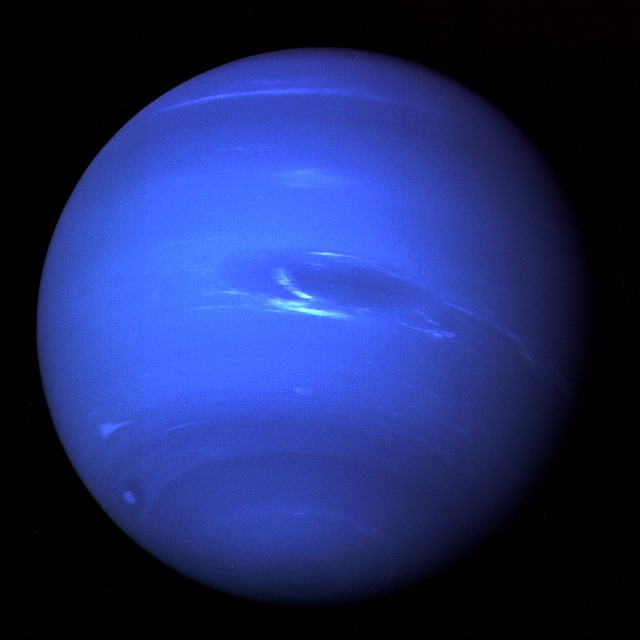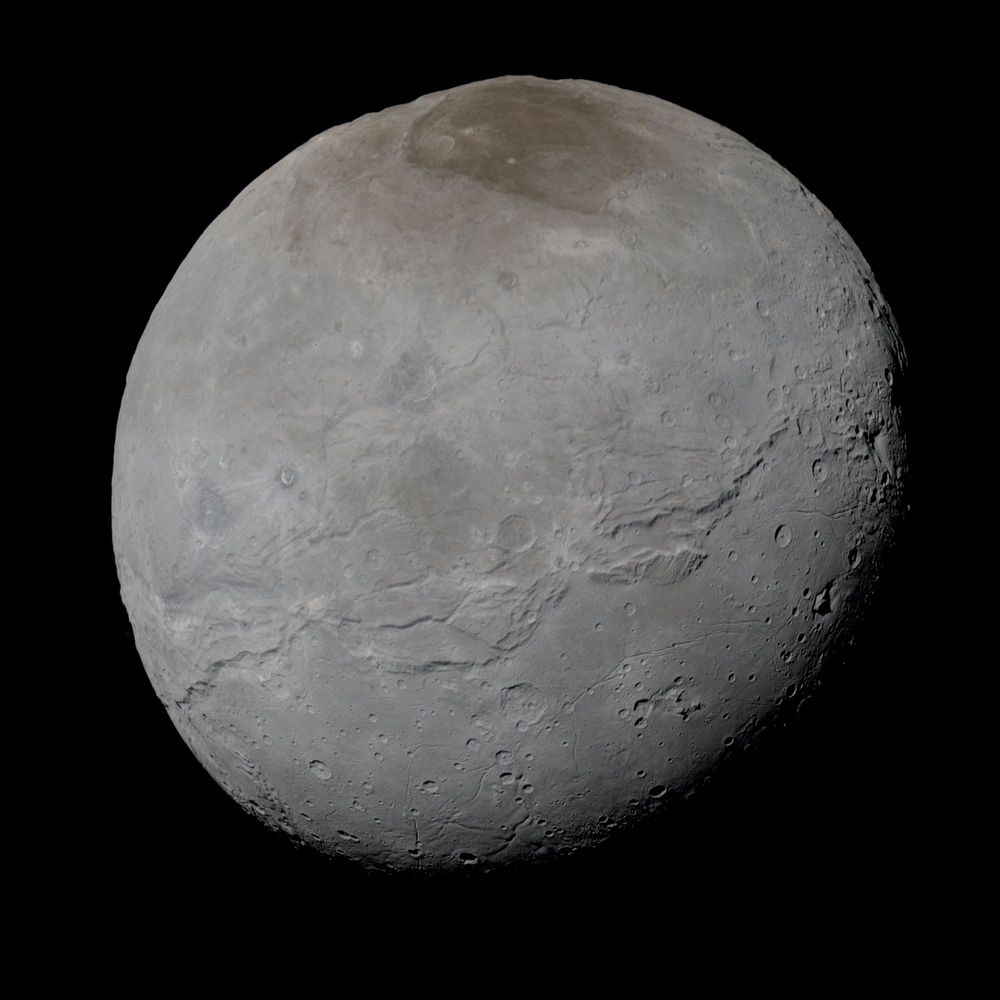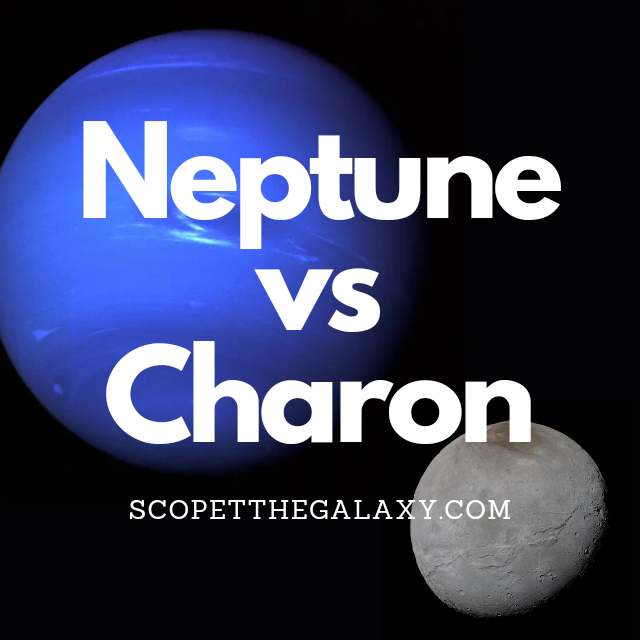*This post may contain affiliate links. This means we may make a commission if you purchase an item using one of our links*
The main differences between Neptune and Charon is that Neptune is a gas based ice giant whilst Charon is Pluto’s largest moon, Neptune has 14 moons surrounding it whilst Charon has 0 and Neptune has the fastest winds in our solar system at 2,000 km/h whilst Charon’s extremely thin atmosphere means wind is practically non-existent on the moon.
There are numerous other differences between the two so, continue reading for a more detailed look at each celestial body along with their similarities and differences below.
What Is The Planet Neptune?
Table of Contents

Neptune is the 8th farthest planet from the Sun and ranks among the bigger planets in our solar system. As the 8th farthest planet from the Sun, it does take Neptune a very long time to complete 1 orbital around the Sun.
This takes 165 years to complete which in comparison to the 16 hour 1 full spin around the axis is a massive difference.
In regards to its composition, Neptune is mostly made up of a thick swath of water closer to the center, methane, ammonia, hydrogen and helium molded around its Earth sized core.
As a result of the excess amount of methane and the inclusion of another undiscovered element within the atmosphere, Neptune’s color is a far deeper blue than the likes Uranus, which also has an abundantly methane based atmosphere.
The planet is 49,244km in diameter, making it roughly 4 times Earth’s diameter Earth, and would allow around 57 Earths to fit inside it. This also makes Neptune the 4th largest planet in our solar system.
Neptune is very cold mostly down to its distance from the Sun, where its atmospheric temperature sits between-220 to -230 degrees Celsius. Its core is far hotter coming in at 5,100 degrees Celsius and is the very likely cause for the liquid water present within the planet
Subsequently, the erratic temperature and gaseous composition of Neptune, is what constitute towards its turbulent behavior.
In fact Neptune has the fasted winds in our solar system, producing some that eclipse speeds of 2,000km per hour. The fastest winds on Earth would only be a fifth of these speeds at most.
At this moment in time we have discovered 14 moons orbiting Neptune and have also observed 5 thinner rings surrounding the ice giant.
What Is The Moon Charon?

Charon is the largest of Pluto’s moons, first discovered on 22nd June 1978. The surface of this icy world is frozen with nitrogen and methane ice; it may also hold some water ice. While Pluto possesses a reddish hue, Charon is closer to a neutral shade of grey; this suggests the two bodies have different compositions.
Scientists named this moon after the mythical ferryman, Charon, who once carried souls across the Acheron river. This river is one of five legendary rivers that could lie beneath the surface of Pluto.
The formation of Charon remains something of a mystery to scientists. However, this moon may have formed around 4.5 billion years ago when an object traveling at immense speed collided with Pluto. Its average distance from the Sun is approximately 3.6 billion km.
Charon is almost half the size of its planet at 1,212km, where scientists refer to these two bodies as a “double dwarf planet system,” and the chilly temperatures vary from minus 23 to minus 258 degrees Celsius.
Charon takes 153 hours to orbit its planet at an average distance of 19,640km, and it is tidally locked, meaning the same side of the moon always faces Pluto. Pluto also experiences a tidal lock to Charon, so the same two sides always face one another.
Among the fascinating features of this ice moon are the ice volcanoes that could exist on the surface. Observations from the Gemini observatory suggest that Charon could have a form of cryovolcanism known as ice-particle geysers.
The frigid world also has a canyon between seven and nine kilometers deep. (To put that into perspective, Mount Everest has a height of 8.8km).
Similarities Between Neptune And Charon
Neptune and Charon do share the odd few similar features, which in this case would include the following:
- Both are a spherical shape.
- Both have a hotter core.
- Both are part of the same solar system.
- Neither have tectonic plates.
- Both orbit another object.
Differences Between Neptune And Charon
In regards to the differences between the two, they include the following:
- Charon is smaller with a diameter 1,212km compared to Neptune’s 49,244km.
- Neptune is an ice giant gas planet whilst Charon is a terrestrial based natural satellite.
- Neptune has 14 moon whilst Charon has 0.
- Neptune orbits the Sun in an almost circular pattern whilst Charon orbits Pluto and the Sun elliptically.
- A day on Neptune takes 16 hours whilst a day on Charon is 153 hours.
- Neptune orbits the Sun in 165 years whilst Charon orbits the Sun in 247.78 years.
- Neptune has an axial tilt of 28 degrees whilst Charon’s axial tilt is straighter in comparison being practically 0 degrees.
- Charon’s average temperature is -23 to -253 degrees whilst Neptune has an average temperature of -220 to -230 degrees Celsius.
- Charon’s atmosphere is near enough non-existent whilst Neptune is composed of mostly hydrogen, helium and methane.
- Charon’s gravity is 0.288 m/s² compared to Neptune’s that is 11.15 m/s².
- Neptune has a mass of 1.024 × 10^26 kg whilst Charon’s mass is 1.58 × 10^21 kg.
- Charon has a density of 1.71 g/cm³ whilst Neptune has a density of 1.64 g/cm³.
- Neptune has the fastest winds in the solar system with speeds of up to 2,000 km/h.
- Charon is tidally locked to Pluto whilst Neptune is not tidally locked to anything.
Summary
Although Neptune and Charon are part of the same solar system, the two are still incomparable in their overall functions within their local regions.
Whether it be in regards to their size, mass, physical composition, length of day, temperatures and their overall function within the solar system so, as a result Neptune and Charon are worlds apart when you breakdown exactly how they operate.

